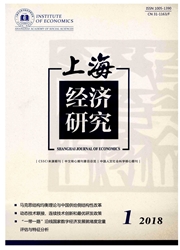

 中文摘要:
中文摘要:
本文旨在揭示长三角从全球制造中心向创新中心转变的渐进性和系统性过程。我们认为长三角由制造中心向创新中心转变的机制分三个过程:首先,长三角制造业集聚促进企业R&D、大学等公共R&D、技术交易市场等科技活动;其次,科技活动和制造业之间形成正反馈效应的创新系统;最后,由封闭走向开放的系统性要素共同决定长三角的创新产出。通过运用递归方法(reeursive regression)扩展Feldman and Florida(1994)地理创新函数的实证检验,结果发现,长三角制造业集聚显著地影响企业R&D等科技活动;区域内科技活动具有一定的相互加强效应;大多数科技活动及开放条件下的外部技术溢出对长三角创新能力有积极影响,但少数要素,如产学研合作、区域间技术溢出等效果还有待于加强。
 英文摘要:
英文摘要:
After theoretically exploring the dynamism of transformation from global manufacturing plants into global innovation center of the Yangtze River Delta, we expand geographic innovation production function originated from Feldman and Florida (1994) by using recursive regressions, in which we recursively test how regional manufacturing agglomeration affects regional innovation output. The results demonstrate that, agglomeration of manufacturing significantly enhance market-oriented activities, like industrial R&D and technology transaction market, and at the same time, scientific and technological activities are interconnected and interacted within the region; all these regional activities alongside with international and inter-regional technological spillovers, together determine regional innovation capability. This paper contributes to investigate the gradual and systematic process of transformation from global manufacturing plants into global innovation center in the Yangtze River Delta.
 同期刊论文项目
同期刊论文项目
 同项目期刊论文
同项目期刊论文
 期刊信息
期刊信息
